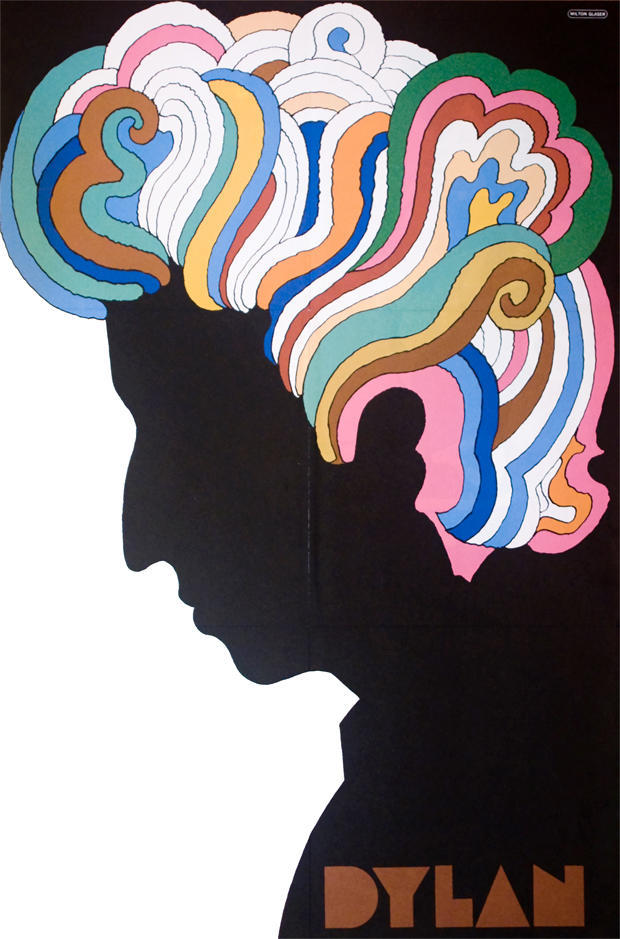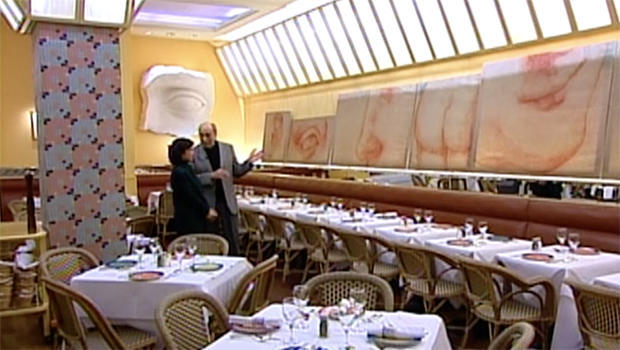Milton Glaser's designing mind
Milton Glaser has designed logos for sweatshirts and mugs, a New York subway station, and even a jar of pickles and beer.
The graphic artist, a dapper uptown New Yorker, is someone you might not have ever heard of. But he has designed a variety of things we see every day, reports CBS News Correspondent Thalia Assuras for CBS News Sunday Morning.
He not only designs magazines and their covers, but also the newsstands from which they are sold. He has designed a tailor shop (his father was a tailor), and he even spruced up a schoolyard fence.
And there are his posters and portraits of such cultural icons as Mick Jagger, Stevie Wonder, and Bob Dylan.
Of his Dylan poster, he said, "I was really trying to evoke a moment in time and a feeling of the period and a person who had shaped that period in--in some kind of symbolic way that gave you an insight into the man and the music."
He also has designed CD covers, and for a book of Shakespeare he gave the playwright a makeover: "There are only one or two images of Shakespeare that everybody uses as a reference. We know he had a high-balding head and so the problem here was to do a Shakespeare with enough references to that portrait so that you'd recognize it, but with enough departure so that it looks strange."
"So, you start from tradition and then you change it completely?" asked Assuras.
"Always, because you always have to start with what the audience already knows. You start with the traditional, and then you violate it."
At 71, Glaser himself has become an icon. In the design world, despite a career of 50 years, he never stops learning…or teaching, for that matter.
Designing is how Milton Glaser makes his living. At an awards ceremony he noted, "Ultimately you never master it. And you never figure it out, which is really exciting, the idea that ultimately you simply don't have to do it over and over and over again because there's always more to learn."
"Design is not art," he told Assuras. "I mean, one must understand that there is a distinction between design, which has to do with planning and quantifiable results, and art, which has to do with metaphysics and spiritual consequences. You can't get confused between those two ideas, although there are points at which they engage one another."
His philosophy is outlined in his latest book, Art Is Work. "I thought it would help everybody if we simply said that this thing called art does not exist in a vacuum, that it is related to other human activities, most significantly to work. And those things that are extraordinary and touch us, we call those great work."
Glaser first studied at Cooper Union in New York and spent two years at an academy in Italy. But his passion for drawing began when he was a little boy. "I was struck by the idea that I wanted to be an artist without having any idea what that meant," he recalls. "The most important thing for a child actually, in terms of their development, is making things, because that's the way the mind develops."
And that sounds like Glaser's mind is still developing and he's still a kid. He just keeps popping up with new things. "Well, I hope so," he said. "'Professional' means to me 'not making mistakes.' And as you know, anything that's really good or extraordinary or creative comes out of the possibility of failure. And so, when you eliminate the possibility for making mistakes, you also eliminate the imagination."
As popular as his designs have become, he hasn't always played to rave reviews. Glaser says he's been called a misogynist, even a sadist, because of the plaster casts he included in his design of a Manhattan restaurant, Trattoria Dell'Arte.
"The critics totally misunderstood my intention," he commented. "What we have in this room are really all the things you would find in an Italian art school. And you'd find canvases leaning up against the wall showing details of some kind and then something that is perhaps understood is that all these body parts, these eyes and noses and mouths and even a breast over there are the kind of thing you'd draw from when you're learning how to draw in an academic way. "
Glaser does love to design restaurants, he says, "because as a social institution, they're one of the most interesting and complex of all social forms, and also because I'm very interested in the idea of pleasure and the relationship between art, beauty, aesthetics, and pleasure. And for me, there isn't anything more interesting than the creation of pleasure."
But even in the act of creating pleasure, Glaser will go only so far. "I have tried to avoid doing things that would be harmful to people, because I believe that 'do no harm' not only applies to doctors, but applies to people who are responsible for transmitting ideas within a culture, which is what you do as a design professional," he explains.
That's why Milton Glaser has established his own ethical standards – warning signs along what he calls a designer's "road to hell."
Among the projects he will not undertake are designing a package for a cereal aimed at children which has low nutritional value, and designing an ad for a political candidate whose policies he believes would be harmful to the general public.
But that leaves plenty he will do. He may not call it art, but you might.
Glaser said, "When you sit down and you have a piece of blank paper in front of you and then you create these personalities, and you can make them literally sit or stand or bend or talk, it's absolutely God-like."
© MMI Viacom Internet Services Inc. All Rights Reserved





